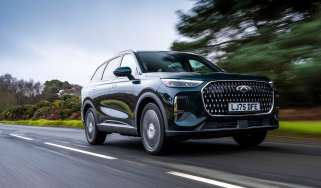Used Land Rover Defender (Mk1, 1990-2016) review - How much will it cost?
Prices are high and values rising, but you’ll need to budget for high running costs
Demand for the Land Rover remains as high as ever, as do prices. In fact, values are actually rising because even the newest Defenders have taken on classic status. Yet while these appreciating assets are better than money in the bank, the running costs are likely to be a drain on your account. Bluff aerodynamics, a heavy-duty transmission and old-tech engines mean fuel and tax bills are high.
Prices
Even when it was new, the Defender was quite a costly car for what it offered. Very early in its life it was a true workhorse, being used by farmers, emergency services and the armed forces., but by the end of its life it was more of a lifestyle vehicle, with prices to match.
The newest cars still attract the highest prices, and if anything values are increasing as the car’s popularity shows no sign of waning and supply is obviously limited. For older, pre-2007 examples you’ll be paying as much for condition as age and mileage, so a careful inspection of any potential purchase will be needed before taking the plunge.
Fuel economy and CO2 emissions
However, while this low-tech running gear means it’s pretty sturdy, it also means it doesn’t benefit from much fuel efficiency technology.
Used - available now

2024 Land Rover
Defender
32,220 milesAutomaticPetrol3.0L
Cash £63,500
2024 Land Rover
Defender
32,426 milesAutomaticDiesel3.0L
Cash £51,114
2024 Land Rover
Defender
33,761 milesAutomaticPetrol5.0L
Cash £73,908
2025 Land Rover
Defender
42,546 milesAutomaticDiesel3.0L
Cash £56,536The short-wheelbase Defender 90 models returned 28mpg, while the long-wheelbase 110 managed 25mpg. However, emissions were high (266g/km of CO2 for the 90 and 295g/km for the 110) which means the last of the Land Rover Defenders are very expensive to tax.
Earlier cars aren’t quite as costly when it comes to VED, with those registered before April 2006 attracting a bill of £340 despite emissions of up to 299g/km. In terms of fuel efficiency, the claimed combined figure of around 28mpg is the same for both the four-cylinder 200 and 300 TDi, and the TD5. However, with their five-speed gearboxes these versions will be thirstier on a long motorway run than the later models.
For the rare V8 models you can expect fuel economy to rarely rise above 20mpg even with gentle use, while being snarled up in stop-start traffic can see consumption dip into single figures.
Running costs
Defenders must be serviced annually or every 12,000 miles, but more frequent checks are worthwhile if you go off-road. Alternating interim and major services are £385/£495 with dealers. Independents will charge around £200-£300 a year for routine maintenance.
The 200 TDI and 300 TDI engines need a fresh cambelt every six years or 72,000 miles; dealers charge around £600 for this, but independents ask for closer to £400. All engines from the TD5 on were chain-driven.






